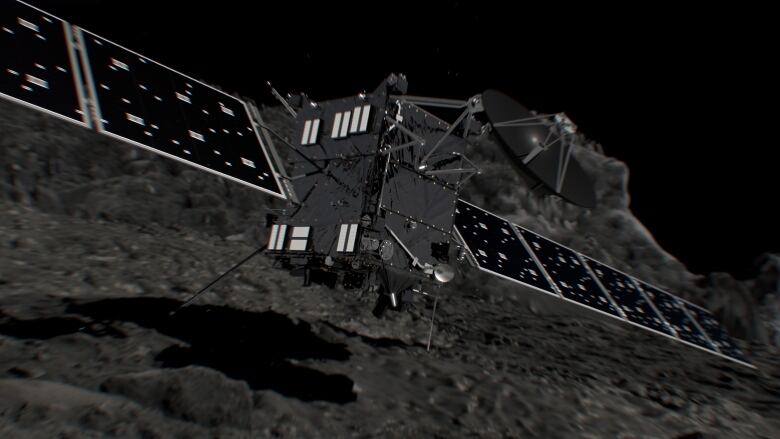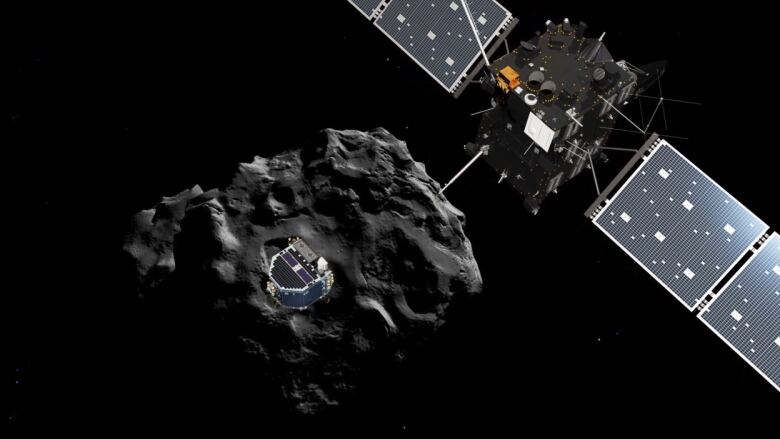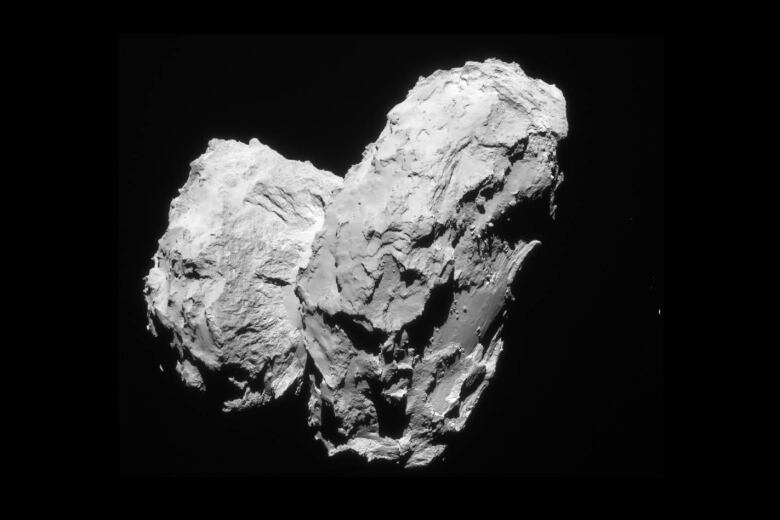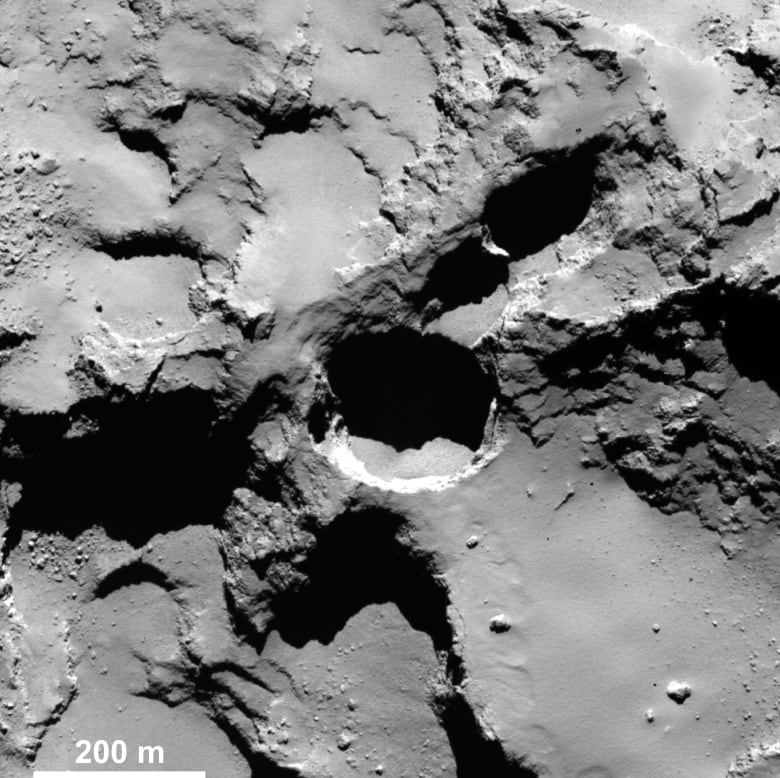Rosetta boldly went where no one has gone before: Bob McDonald
Launched in 2004, Rosetta is one of the most successful robotic missions to space

After spending 12 years in space, passing by two asteroids, making the first rendezvous with a comet, setting a lander down on the comet's surface, then staying with the icy body as it flew close to the sun, the Rosetta spacecraftended its mission this week by crashing into the very object it had been studying.
It was one of the most successful robotic missions ever sent to deep space.
Rosetta's long odyssey
The European Space Agency launched Rosetta in 2004 on a long interplanetary odyssey that involved circling the sun almost five times just to catch the comet. And comets are not easy to catch.
Unlike planets, which follow almost circular orbits around the sun, comets come from far away, race in towardthe sun on highly elliptical orbits, then race back out again. In other words, they are fast and on a different track, so it takes a lot of energy to catch up to one, more energy than our current rockets can provide.
To gain that energy, Rosetta had to take the long road, following a looping path around the sun that brought it back to the Earth, then out to Mars, and back to the Earth two more times, each time using the gravity of the planets to slingshot itself up to greater speeds, the way a discus thrower winds up by spinning around before the toss.
That spin-up took Rosetta a decade to perform, with 2of those years spent in hibernation, finally flinging itself out to the orbit of Jupiter to meet its target, comet 67P/Churyumov-Gerasimenko.
Philae lander released to comet's surface

Just getting out to comet 67Pwas a remarkable accomplishment, but once Rosetta arrived, controllers had to delicately manoeuvre the spacecraft so it would not sail right past without stopping.
The body of the comet, which looks like a rubber duck,and measures only four by fivekilometres, is made of low-density ice and dust, so there is very little gravity to hold Rosetta in orbit. If you were to stand on the surface of the comet your body would weigh about as much a paper clip.
Still, they managed to come to within 22 kilometres of the object to drop the smaller probe Philae, which made the first ever landing on the surface of a comet.

Engineers knew that landing in that low gravity would be difficult, because the probe could easily just bounceoff the surface. So they built in a set of harpoons that were supposed to dig into the surface and hold it down.
Unfortunately, those harpoons didn't fire, so Philae bounced,soaring across the surface for 45 minutes, then bounced again, and again, finally coming to rest on its side in the shadow of a cliff.
Rosetta mission science
That shadow prevented sunlight from reaching solar panels to charge the batteries, so Philae only lasted for 60 hours, but it still sent back valuable images and data on the structure of the comet.

Even as the signal from the tiny lander faded, the mission was far from over. The mothership remained in orbit around 67P, mapping its entire surface in high-resolution detail, then watched as gases began to erupt in geysers as the heat of the sun vaporized iceand formed the comet's long tail.
Comets and their eerie tails have graced the skies of Earth for centuries, often generating fear and superstition. Rosetta for the first timeshowed us the phenomenon from the comet's point of view.
Rosetta's controlled crashlanding

As 67Pand Rosetta raced away from the sun, back out to the darkness of deep space, the spacecraft's solar panelsgatheredless energy. So rather than leave it adrift, controllers decided to make a slow, controlled crash landing to end the mission.
But even the end involved good science, as the crash site is a vent where gases emerge from the interior, and rock layers inside the vent could provide information about the comet's past.
Rosetta was a remarkable success, proving once againthat robots are the true explorers of our solar system. While Elon Musk wowed the world with his plans to send people to Mars in his giant spaceships,robots had to go there first to survey that landscape.
Our robotic probes have been to every planet, discovered hundreds of moons we didn't know existed,flown past asteroids, visited dwarf planets Pluto and Ceres, and a few have even left our solar system altogether to wander among the stars. Rosetta is now in the history books as one of the greatest missions of them all.
Farewell Rosetta, thank you for boldly going where no one has gone before.












_(720p).jpg)


 OFFICIAL HD MUSIC VIDEO.jpg)
.jpg)



























































































